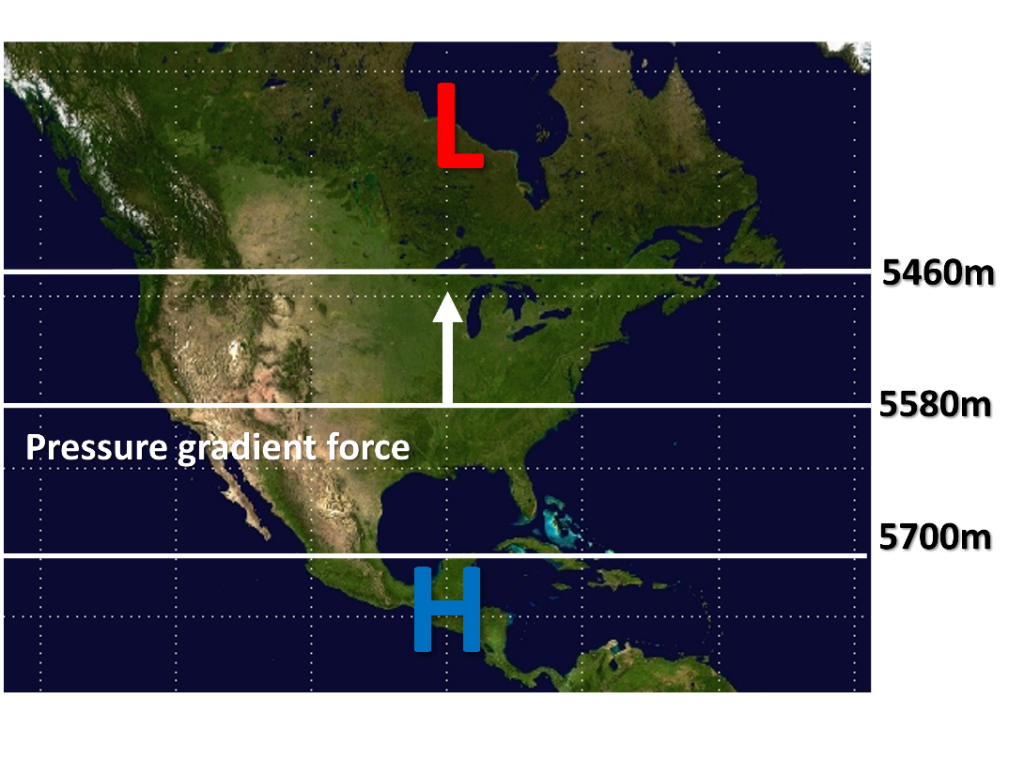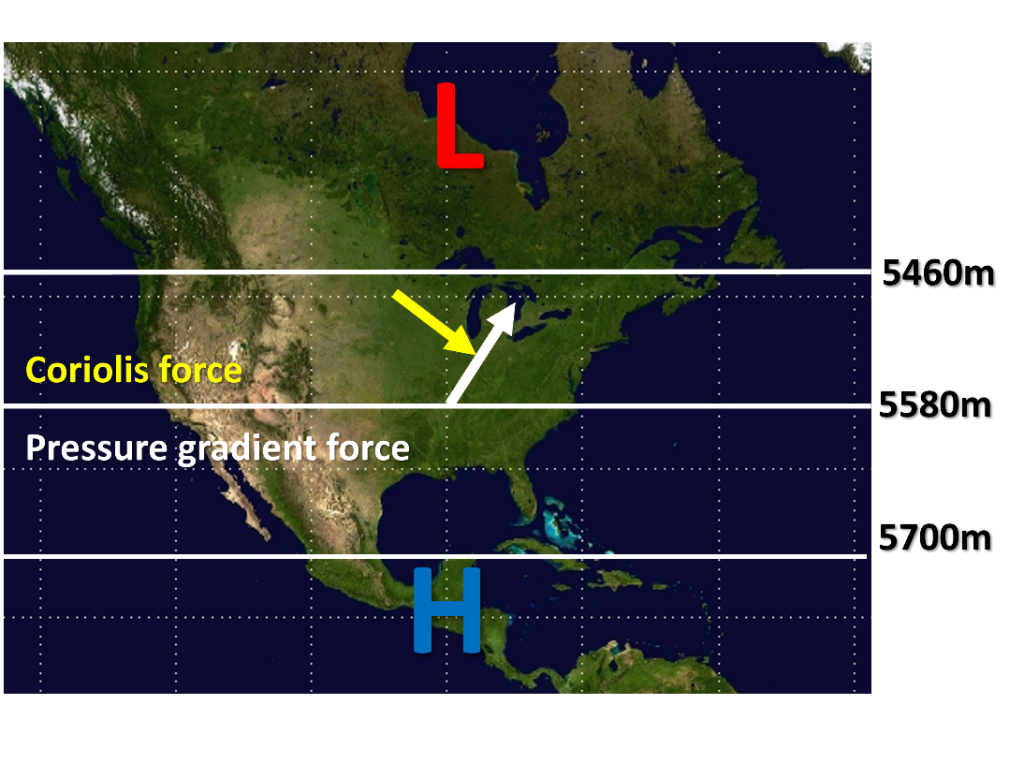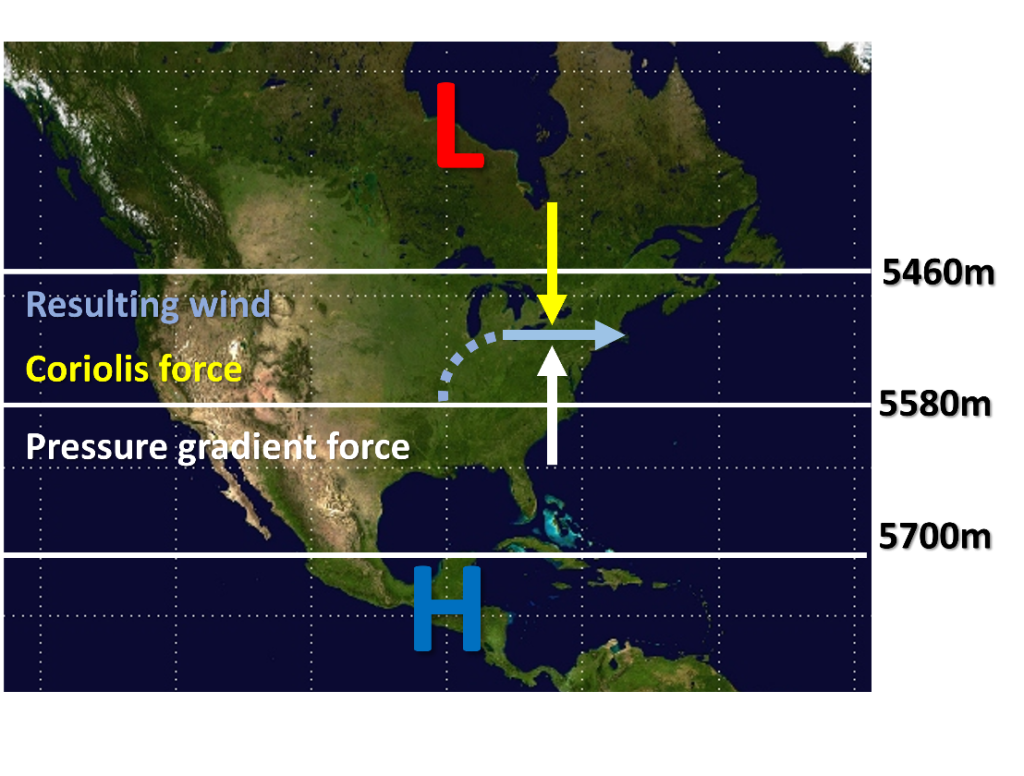3.3 Applying the Forces Which Affect Wind
3.3 Forces Which Affect Wind
Three forces affecting wind have been identified:
- Pressure gradient force
- Coriolis force
- Friction
Additionally, we have the methods for analyzing pressure (1) at the surface using sea-level pressure isobars and (2) aloft using heights at a set pressure value (like 500 mb). Applying these techniques and knowledge will enable us to expand our understanding of the atmosphere even further. This next submodule applies these principles to accomplish that goal.
3.3.1Winds Aloft
The wind above the boundary layer is assumed to be frictionless. These winds do not encounter the Earth or any vegetation or structure on the Earth. With no friction only two forces are left to analyze (1) the pressure gradient force and (2) the Coriolis force. Examining the pressure gradient force, we know that wind moves from high to low pressure. We also know that higher heights are present closer to the tropics and lower heights closer to the poles. This situation has air moving from higher to lower or from south to the north.

Now considering the Coriolis force, the direction of the wind will be deflected to the right. The wind speed associated with the pressure gradient force remains the same. However, the stronger the wind speed the more deflection to the right due to the Coriolis force.

Eventually the pressure gradient and Coriolis forces must balance. When balance occurs, the wind will be parallel to the height contours.
If the wind were to turn further south, its speed would decrease going against the pressure gradient force. A slower wind speed reduces the Coriolis force. A weaker Coriolis force would shift the wind back north to restore the balance.

Geostrophic flow or geostrophic balance is defined as when the pressure gradient and Coriolis forces are equal and the wind is at a constant speed. Once established, geostrophic flow is very stable and can be observed in the upper atmosphere.
The real atmosphere, unlike the previous illustrations, does not have a uniform pressure gradient with straight lines. Variations in the pressure gradient cause the wind to speed up and slow down. These changes in speed also result in changes in the Coriolis force. A balance between the Coriolis and pressure gradient forces, although with wind speed changes, is called gradient flow. Gradient flow is much more common in the atmosphere and the wind still flows parallel to the height contours. The biggest difference between geostrophic and gradient flows is that the wind speed varies in the gradient flow.
Examining the 500 mb map shown previously in this module provides an illustration of both geostrophic and gradient flows. Notice the wind and heights over Arizona and New Mexico. The height lines are straight. The winds are a constant speed and direction across the area. These characteristics are associated with geostrophic flow. Looking at the eastern U.S., the height contours have a wavy appearance and the wind speed varies from 15 to 60 knots across the area. These characteristics are associated with gradient flow. In both examples, the winds are parallel to the height contours.

Video: Winds Aloft (4:37 min)
This video discusses geostrophic and gradient flows and how they develop.

